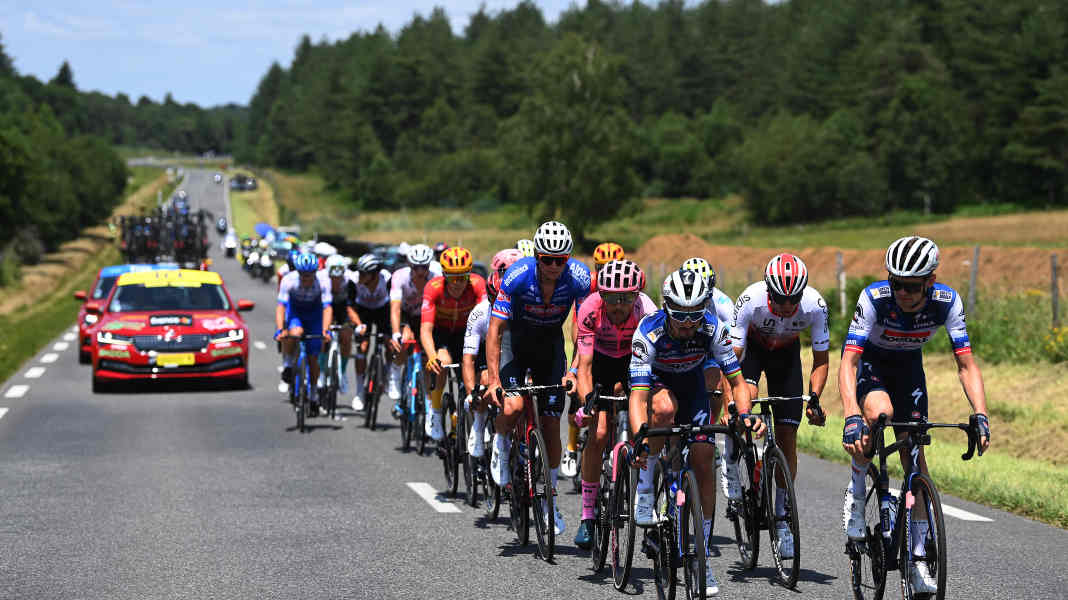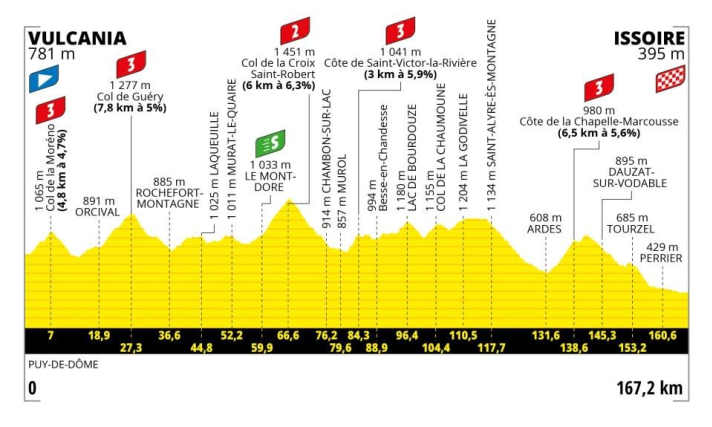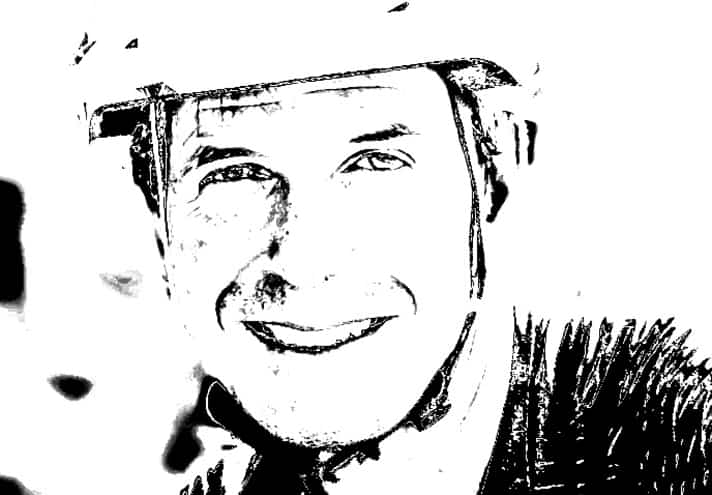
Tour de France 2023 - Stage 10: Vulcania - Issoire | 167,2 Kilometres

The tenth stage of the Tour de France 2023 has 3,100 meters of climbing in store for the escapees, who will almost certainly break away from the peloton today and also prevail in the end. The most striking climb is the Col de la Croix Saint-Robert, 1,451 meters high and with an average gradient of 6.3% over 6 km. The difficulty today lies less in the length and steepness of the climbs than in their frequency. The altitude profile looks like a saw blade, it goes steadily up and down. Whoever decides to escape today should therefore be speed and climbing resistant.
On the mountain stages we have seen that the teams have chosen different strategies when it comes to material selection. Some teams rode uniformly on aero bikes, others left it up to their riders to choose a light or aero bike.
What would be recommended for the jagged profile of stage 10 of the Tour de France 2023?
We modeled the entire stage to answer this question. Our assumption on this is somewhat simplified: attack at kilometer zero and then a lonely ride over the entire distance. Under these conditions, unsurprisingly, an aero model prevails. Canyon Aeroad, Cervelo S5 and Cannondale System Six lead the way. The calculated advantage for Canyon is based on its lower weight compared to Cervelo. But the effect is not strong - 11 seconds over the whole distance. Aerodynamically weak bikes ride many minutes behind.
Number of the day: 6:41 minutes
The fastest bike in our list gains almost seven minutes under the above conditions.
This shows that the choice of bike is quite significant for a breakaway. In no other scenario are such large time differences possible.
However, it is unlikely that a single rider will ride the whole course of the tenth stage of the Tour de France 2023 alone. The likes of Jens Voigt, who was able to break away from the peloton on his own if necessary, have not yet shown up in this Tour de France. In a group, the material effect is reduced by slipstream riding. But the characteristics remain basically the same. Those who want to escape on this stage should use an aero setup and basically be very sparing with their energy. The last 24 kilometers are almost entirely downhill. Anyone who wants to maintain an advantage over several chasers here will need top aerodynamics. Should a sprint by a breakaway group occur, aero is also a trump card: the finale is almost flat. There is a small mini-wave before the 1,000-meter mark, and the last 1,000 meters climb by four meters.
Our model racer needs an average of 300 W to cover the distance at an average of 38.8 km/h.
The (almost) entire field at a glance

*) The calculations are based on the bikes tested by TOUR in the laboratory and wind tunnel. The bikes at the Tour de France may differ in details. Of course, we have not yet been able to examine last-minute prototypes either.
Our Expert

Robert Kühnen studied mechanical engineering, writes for TOUR about technology and training topics and develops testing methods. Robert has been refining the simulation calculations for years, they are also used by professional teams.
